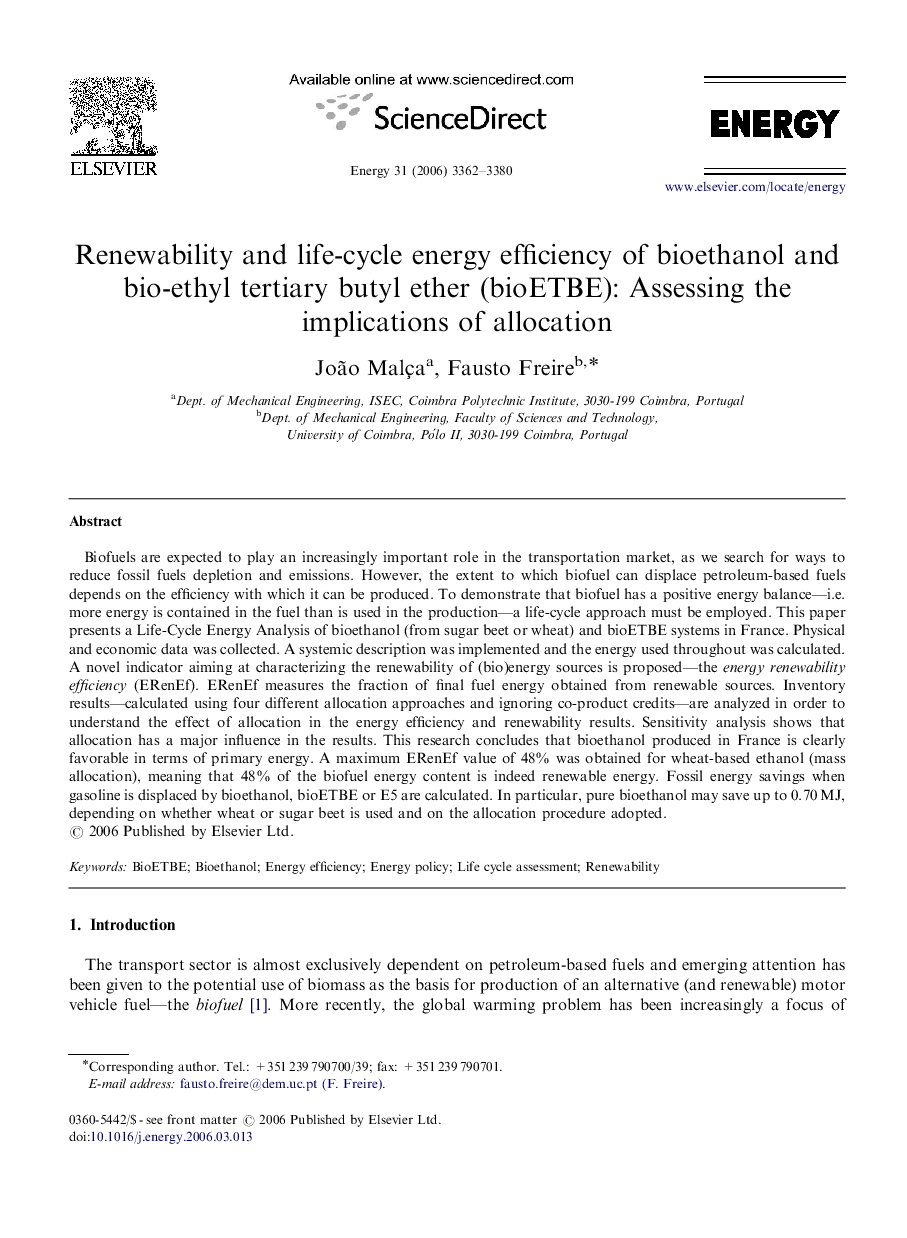| Article ID | Journal | Published Year | Pages | File Type |
|---|---|---|---|---|
| 1736106 | Energy | 2006 | 19 Pages |
Biofuels are expected to play an increasingly important role in the transportation market, as we search for ways to reduce fossil fuels depletion and emissions. However, the extent to which biofuel can displace petroleum-based fuels depends on the efficiency with which it can be produced. To demonstrate that biofuel has a positive energy balance—i.e. more energy is contained in the fuel than is used in the production—a life-cycle approach must be employed. This paper presents a Life-Cycle Energy Analysis of bioethanol (from sugar beet or wheat) and bioETBE systems in France. Physical and economic data was collected. A systemic description was implemented and the energy used throughout was calculated. A novel indicator aiming at characterizing the renewability of (bio)energy sources is proposed—the energy renewability efficiency (ERenEf). ERenEf measures the fraction of final fuel energy obtained from renewable sources. Inventory results—calculated using four different allocation approaches and ignoring co-product credits—are analyzed in order to understand the effect of allocation in the energy efficiency and renewability results. Sensitivity analysis shows that allocation has a major influence in the results. This research concludes that bioethanol produced in France is clearly favorable in terms of primary energy. A maximum ERenEf value of 48% was obtained for wheat-based ethanol (mass allocation), meaning that 48% of the biofuel energy content is indeed renewable energy. Fossil energy savings when gasoline is displaced by bioethanol, bioETBE or E5 are calculated. In particular, pure bioethanol may save up to 0.70 MJ, depending on whether wheat or sugar beet is used and on the allocation procedure adopted.
